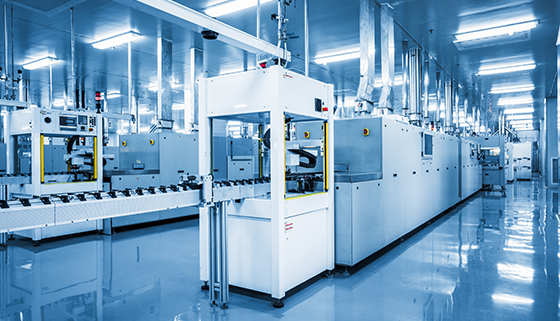
Due to their relatively small diameter, optical fibers are more exposed to rodent attack than traditional telecommunication cables. Due to their gnawing habit, rodents cause lots of maintenance problem by cutting and destroying wires of telecommunication and transmission equipment.
Subterranean termites and other insects are also known to feed on wires and cables which may be laid underground for transmission of information and communication purposes. This can expose wires and lead to short circuits. The Termite Prevention and Control Research Institute have studies reporting that insects also damage wires and cables made from copper, iron, and aluminum. Hence the damage done to wires and cables needs to be addressed.
Besides birds cause damage to the power lines and cables. Birds sitting on power poles or conducting cables are killed causing short circuits. These birds damage power line by extracting a long thread of insulation material. They collide with overhead structures and conductors, contaminate insulators and equipment, and damage facilities leading to interruptions. Their size, type, and habitat all contribute to the potential negative impact they can have on the power grid of railways.
Conventional insecticides/rodenticides cannot be processed with these wires and cables as they aren't meant for polymer processing temperatures often leading to toxic fumes which are a hazard to workers handling the processing of wires and cables. CombirepelTM combines the need to deal with these pests combined with the need of having a low toxic and low hazardous additive for the telecommunication industry.
CombirepelTM is available in the form of LDPE/EVA universal concentrates which can be easily incorporated in the cables during the process of extrusion. CombirepelTM works by keeping the pest away from the target application & by conditioning the response of pest, without harming the pest in any way.
CombirepelTM Lacquer and liquid concentrates can be coated over the existing cable to protect them from the damage inflicted by pests. The product in the form of spray can be sprayed on the electric wiring, electronic components and devices, etc. CombirepelTM bird repellent gel lacquer can also be applied on the overhead wires and cables to prevent bird damage.

Gas pipelines especially the ones which are used for hauling natural gas over long distances are vulnerable to attacks by aggressive subterranean termites as also other insects.The gas transfer is disrupted when the insects try to feed or damage the rubber gas tubing and pipelines carrying gas leading to a potential disaster in case of a gas leak. Hence pest proofing of the gas pipeline needs to be done effectively.
This has now compelled the pipeline and rubber tubing manufacturers to fabricate products, with anti-pest properties, complying with government specifications. Times online, UK News had reported the death of an old lady due to a gas explosion. Gnawing rodents were to blame for the death of an 80-year-old woman in a massive explosion that flattened her home. They had gnawed through her kitchen rubber pipes, causing a build-up of gas in the room.

Rodents significantly damage crop before and after with an estimated 20% of the world's food supply consumed or contaminated each year. Rodents have two major impacts. The first is the substantial pre- and postharvest losses they cause to agriculture.
The second is as carriers of debilitating human diseases, insects are most often responsible for damaging crops as it eats leaves or burrows in stems, fruit, or roots. The spread of pests and pathogens that damage plant life could cost global agriculture $540 billion a year, according to a report published by the Royal Botanic Gardens (RBG) at Kew in London. This requires that the problem of insects be addressed in an effective manner.
These losses need to be minimized/nullified. Plastic bags which are incorporated with CombirepelTM can be used to tackle this menace thereby reducing losses of the stored grain.
CombirepelTM lacquer and liquid concentrate can be coated as a top coat on the fencing and tree guards, already installed pipes, System components like sprinklers, equipment wires, cables, etc. CombirepelTM sprays can be sprayed on storage and equipment rooms.

A termite barrier is a physical object that keeps termites from penetrating the foundation of a house or accessing other parts of the property. Termites are wood-destroying pests most commonly found all over the planet.
New developments and centrally heated homes all over the United States, Europe, and Australia have made them the breeding centers of termites. According to Bjostad, termites cause $22 billion in structural damage annually around the world. This includes $11 billion in annual damage in the United States, including damage in Colorado, where many residents are unaware of termite infestation. The estimated cost of termite treatment is 200 million Euros per year. If added the cost of repairs, replacement or destruction of structures, furniture, walls,and other woodwork, the annual cost in France would be around 500 million Euros a year. More and more countries are now heading towards a termite barrier system installed during the construction phase of the house. CombirepelTM can be incorporated in these termite barriers and thus used for protection of the houses from termites and other pests.
CombirepelTM can also be used as a wood preservative to protect household furniture from infestation from aggressive Formosan termites which are known to inhabit wooden constructions and other wood damaging insects. The wood prior to use in the application can be dipped into a solution of CombirepelTM thus rendering it pest proof.

Rodents often disturb underground train services and metro rail services. They are a menace for the passengers travelling in train especially in A.C. coaches. Thousands of complaints have been registered by people travelling in trains regarding rodents.
These problems can be addressed by the use of CombirepelTM by blending with paint and coating the same to the coaches. Sprays can be sprayed on infested areas or areas to be protected. Lacquer can be applied directly on surfaces to protect it against pest damages. The polymeric seats and rexine can be manufactured by incorporating a CombirepelTM masterbatch.

World over heritage structures which are the symbol of pride for any country suffers the ignominy of being vandalized by birds who sit on these heritage structures and make a mess with their pecking, food habits, and droppings.
A customized application of CombirepelTM has been developed by which it can act on certain receptors in the feet of these birds and thus effectively keep the birds away and prevent them from approaching these structures paves the way for heritage structures to once again serve as a symbol of pride and glory.

The rodents have been a nuisance for the defense system. They move the underground laid mines from their original location creating trouble for them to locate it again. They chew the cables and pipes also creating a problem for the defense to transmit information from one place to another.

According to a study by the Defense Research and Development Establishment, Gwalior, India; the aircraft arrester system remains in the open ground all the time, since it is used on runways.
It is damaged by rodents who by nature chew and cut materials and hence nylon tapes in open fields are susceptible to these rodent attacks. The rodents consume more than 50% of the nylon belt without any rodent repellent additive.
CombirepelTM can be incorporated in these aircraft systems instead of nylon tapes to protect them from the rodent menace. Attributing to the training and association and conditioning principle of, the rodents remembering the unpleasant experience will avoid it and pass the information also to its progeny.

Many of us have had trouble starting our cars in the morning as a rat or a vole had eaten through the cable. Complaints of car shut-downs and engine damage are extensive and prevalent globally. And to add to the dilemma, rodent damage is not covered under most auto insurance schemes. Insects thrive on chewing and munching the wiring insulation and building nests in vehicle relays.
CombirepelTM can be incorporated at polymer processing stage to give pest resistant internal components. The lacquer and liquid concentrate can be used as a topical solution to coat already installed wires and cables, plastic containers, interior furnishing, plastic accessories, etc. Sprays can be sprayed on underhood components and other equipment.

Pest menace in hospitals has become a common sight in most of the hospitals across the country. From rats biting patients in ICU and dead bodies in the mortuary to bed bug infestations and food contamination through dead insects, the complaints about pest menace in areas of hospitals are on the rise.
CombirepelTM liquid concentrate can be diluted in paints and can be applied on interior and exterior of hospitals, patient’s room, and operation theatres. The lacquer can be directly applied on the surfaces that need protection while sprays can be an easy to use product.

Hotels and restaurants prove to be the best places for pests to explore new delicacies! They find food almost everywhere, in the kitchen area, in the garbage and even on the leftover trays. This causes contamination of food items resulting in the transmission of various diseases. Rodents are always in search of warmth. Cases of bedbugs invading hotel rooms are always on a peak.
CombirepelTM lacquer and liquid concentrate can be used as a topical application to coat kitchen areas, food storage areas, laundry, hotel interiors, furniture, vents, pipes, doors, and windows, etc. Sprays can be used to repel the pests from hotel premises and equipment.

Rodent attack on wiring and cables could disrupt the functioning of a ship. A large number of foodstuffs stored attract insects and rodents. They contaminate the pantries with urine and droppings. Termites cause large damage to boats in boat harbor or wooden surfaces in the interiors of the boats. Termites have been found eating a 60ft motorboat in a Florida boatyard. Bed bugs and cockroaches are a major problem on cruise lines and cruise vessels. There are numerous cases reported of infestation in the mattresses and seats with patrons being severely inconvenienced.
Ships and other marine structure can be protected from pests by a paint based solution of our CombirepelTM applied as an outer coating. Our products added to the material of the mattresses and berths can prevent infestation by bed bugs and protect passengers from harm. The lacquer can be used as a direct application on the surfaces which need to be protected while the wood polish additive can be added with the wood polish used to coat the wooden articles.

Many electronics companies have been trying to come up with new methods to prevent the cable and wiring of refrigerators from pest attack. LG, one of the leading home appliance manufacturers, have developed anti-rodent sleeves using ROHS compliant polymer additives for such measures.